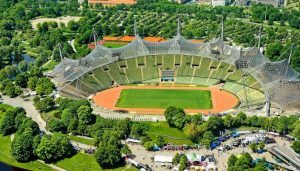
ISTOCK / PAPABEAR
El International Olympic Committee has published a guide to offer city politicians some keys to unite sport and nature in cities.
This guide created by the International Union for the Conservation of Nature (IUCN), in collaboration with the International Olympic Committee (COI) and the San Francisco Estuary Institute (SFEI), identifies key ecological criteria that city officials and sports facility promoters can apply, to incorporate the needs of nature in your planning.
The new guide is called Sports and Urban Biodiversity and aims to achieve mutual benefits for nature and sports in cities.
This explains how investing in urban biodiversity offers an opportunity for sports federations, venue owners and operators and local organizing committees, as well as urban planners and investors, build a lasting and socially positive legacy in cities.
"Both sport and urban nature play essential roles in the well-being of city dwellers, contributing to a livable urban environment.
New infrastructures and sporting events present unique opportunities to create space for biodiversity and strengthen the health and resilience of our citiessaid IUCN Director General Bruno Oberle.
"ItThis guide is an important tool for urban planners, promoters and sports facility operators to make the most of these opportunities."He added.
Christophe De Kepper, IOC Director General, said: “We hope this guide, along with the other guides in the series, will help the sports community better understand their relationship with nature and inspire them to take concrete steps to help address today's immense environmental challenges […]
Sport activities must benefit nature if we want to continue enjoying them, while striving to achieve our vision of 'building a better world through sport".
The guide outlines a planning framework containing seven ecological criteria that determine the impact of sports infrastructure on biodiversity,
"By applying these seven elements, local authorities and the sports community can help build resilient cities for athletes and wildlife.e,” said Robin Grossinger, senior scientist at SFEI, an ecological research group.
The report highlights how sports venues and events that have already adopted these measures have contributed to nature conservation in urban areas, including:
The rehabilitation and construction of the Queen Elizabeth Olympic Park, Built for the London 2012 Olympic and Paralympic Games, it created a 45-hectare patch of urban habitat as well as a recreational space for visitors.
El National Golf in France, Host of the annual French Open and Ryder Cup 2018, it promotes habitat diversity with 10 different habitats present on the site that are home to 350 species, 13 of them rare.
En New South Wales (Australia), members of the Kinross Wolaroi School Rowing Program launched a project to restore degraded land around the Spring Creek Reservoir.
The team organized community work days to remove invasive species from a section of the coast and plant native plants.
El Kenilworth racecourse is a horse racing venue in Cape Town (South Africa), which has existed for over 130 years.
The 52-hectare inland area of the racecourse is a protected patch of rare fynbos habitat. More than 300 indigenous plant species, including several threatened species, live within the reserve and support a number of animal communities.
This guide is the fourth in a series produced by IUCN as part of a collaboration agreement with IOC.
The first guide examined the general links between sport and biodiversity; the second guide focused on minimizing the environmental impact of the new sports facilities; and in the third, solutions to mitigate the impacts associated with sporting events were highlighted.
As part of its strategic roadmap, the Olympic Agenda 2020, the IOC actively supports the Olympic Movement and the sporting community at large in tackling some of the world's most critical challenges, such as climate change and loss of biodiversity.
The current collaboration agreement between IUCN and the IOC runs from 2017 to 2020.
In addition to producing the guides on sport and biodiversity, IUCN provided advice on the bid process for the 2024 and 2028 Olympic Games, and has undertaken other work related to the IOC's sustainability strategy.
The Sports and Biodiversity guide can be downloaded here: https://portals.iucn.org/library/node/49127